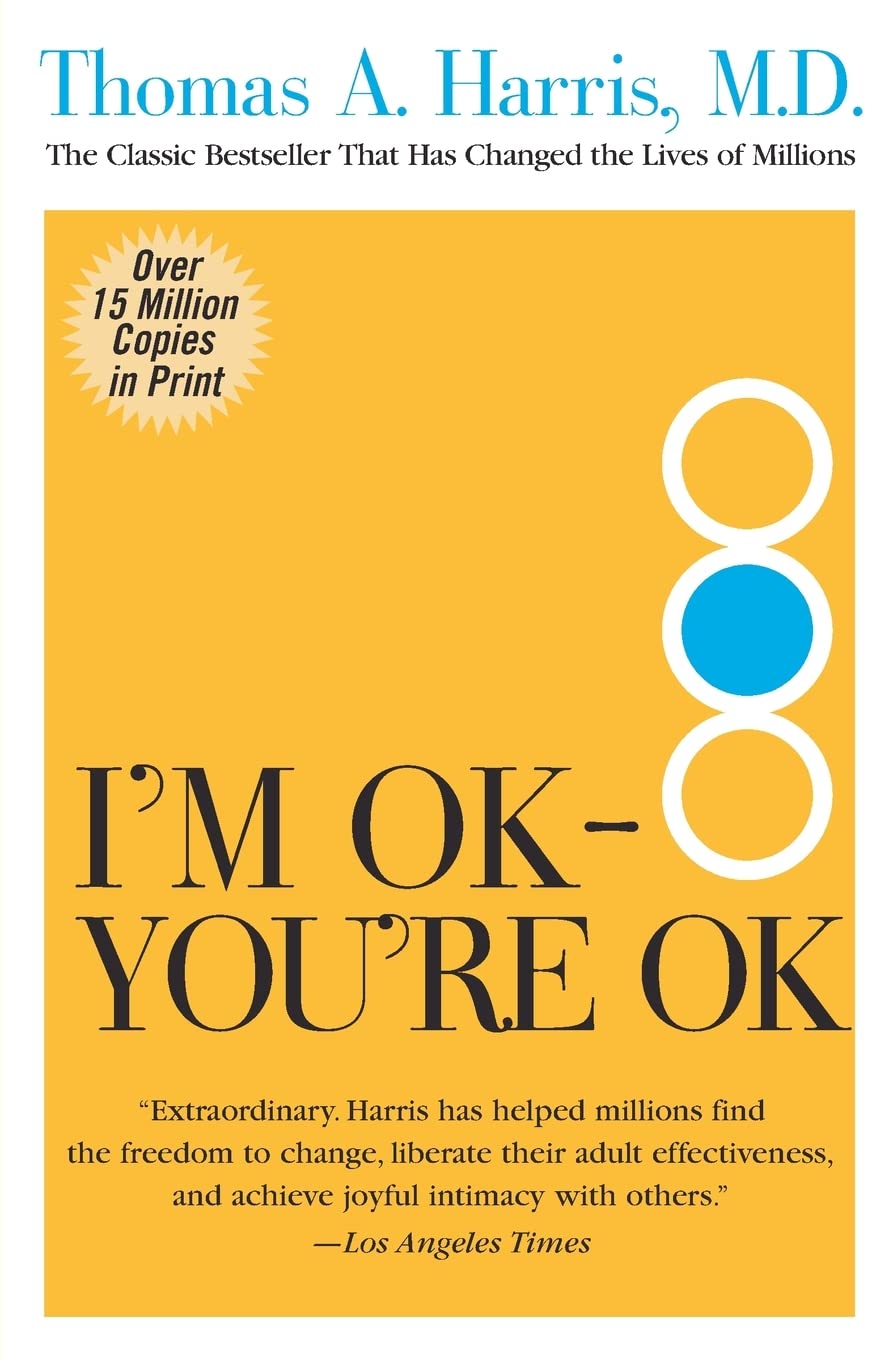I'm OK, You're OK by Thomas Harris
The Classic Bestseller that has Changed the Lives of Millions
Cover
Transactional analysis delineates three ego-states (Parent, Adult and Child) as the basis for the content and quality of interpersonal communication. “Happy childhood” notwithstanding, says Harris, most of us are living out the not OK feelings of a defenseless child wholly dependent on others (parents) for stroking and caring. At some stage early in our lives we adopt a “position” about ourselves and others that determines how we feel about everything we do. And for a huge portion of the population, that position is “I’m Not OK-You’re OK.” This negative “life position,” shared by successful and unsuccessful people alike, contaminates our rational adult capabilities, leaving us vulnerable to inappropriate, emotional reactions of our child and uncritically learned behavior programmed into our parent. By exploring the structure of our personalities and understanding old decisions, Harris believes we can find the freedom to change our lives.
Connection
I bought a first edition copy of this book while at a thrift store.
Main Ideas
Ch. 1: Our memories are linked to powerful emotions that are better understood when analyzed. Wilder Penfield, a Montreal brain surgeon in 1951 stimulated parts of his patients brains with an electrode. When stimulated patients not only recalled the memory, but the emotions with it. Memories can cause us to relive past experiences.
Ch. 2: Transactional analysis recognizes three main personality components: the child, parent, and adult. Psychologist Eric Byrne developed a form of therapy called transactional analysis. One of the main principles is that everyone has three main personality components. He came up with this system after noticing a pattern in patients during the 1950s. The child is the result of experiences from our early years as a helpless child. The parent is the result of memories that related to the beliefs and behaviors of our parents and other authority figures. The adult is our rational self that tries to balance the other two.
Ch. 3: Early childhood memories can lead to feelings of insecurity and the impression that others are stronger. There is a difference between consciously recalling an experience and unconsciously reliving it. Birth is a traumatic experience that makes us feel unprotected. From our parent’s coddling, we believe that only others are strong.
Ch. 4: People tend to adhere to old patterns of behavior, but these patterns can be broken. Parents can program parts of our behavior. Behaving against those patterns can create anxiety. It’s up to the adult part to escape that behavior through reason. It’s important to recognize and control the parent and child parts of the personality.
Ch. 5: We can learn to recognize the child, parent, and adult within us. Pay attention to the physical cues that happen for each one, such as facial expression or tone of voice. Think of behaviors that your parents did. Sighing and crossing their arms.
Ch. 6: The parent, child and adult are susceptible to contamination and suppression. The components of our mind don’t always get along with each other. The parent or child can prohibit the adult from functioning properly.
Ch. 7: Our inner child likes to play games that allow it to feel superior and garner sympathy. One example is claiming superiority over another. From insecurity, a child can gain false confidence by claiming superiority. Groups will find a scapegoat so that members can feel superior. The inner child will also play victim to elicit sympathy.
Ch. 8: To arrive at the point of “I’m okay,” you must recognize your emotional patterns and change them. It’s normal to feel overwhelmed. Take a step back and look at it from a fresh perspective. Avoid the pattern of blindly following the voice of authority figures and seeking their approval in the choices you make. This also allows the child to let go of fears and turn responsibility over to the adult. Make choices that reflect your individuality.
